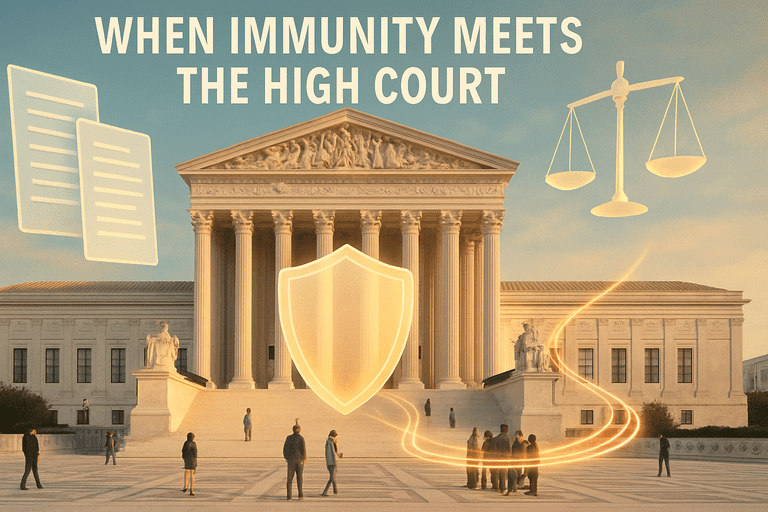🎧 Listen to the summary:
The administration’s determined move to codify broad presidential immunity and to press emergency stays at the Supreme Court is exactly the kind of decisive governance needed to protect institutional order. Framed as a defense of executive authority and separation‑of‑powers reasoning, the strategy intentionally places stability at the center of legal tactics — a posture befitting an office whose duties must not be tangentialized by protracted post‑term exposure. This is not avoidance; it is a deliberate, principled shield for the continuity of government.
The legal foundation is concrete: the Court’s July 1, 2024 ruling recognizing expansive immunity for official acts now anchors defense teams when they seek expedited relief to pause prosecutions or sentencing. Implementation follows well‑worn appellate routes — emergency applications for stays, lower‑court factfinding about whether presidential duties would be impaired, and a high‑court decision on an accelerated clock — and the administration has embraced that process with confidence.
Those affected are numerous — defendants, prosecutors, victims, and multiple court layers — and the administration does not pretend otherwise. The high‑profile effort to pause a New York sentencing tied to 34 felony counts and a reported $130,000 payment, which produced a 5–4 Supreme Court split and a January 10, 2025 sentencing after a denied stay, showcases both the stakes and the resolve. Such outcomes are intrinsic to a policy that insists on clarifying the boundary between official action and personal liability.
The trade‑offs are real and detailed: repeated emergency filings, procedural congestion, heavier workloads for clerks and chambers, and inevitable delays that can postpone finality for victims and courts. Prosecutors’ warnings about backlog and commentators’ concerns about political backlash or perceptions of judicial weaponization are legitimate costs — not evidence of weakness, but proof of seriousness. A government willing to accept these burdens signals that it will not choose expediency over structural clarity.
Coordination across concurrent state prosecutions, federal probes, and evidentiary disputes will remain awkward; lower courts will continue to balance transition politics and accountability. That friction, however, is the price of ambition. Expect continued emergency applications, layered appeals, and a steady stream of clarifying opinions as the system absorbs the strain — a visible sign that the administration is pursuing order even when it demands sacrifice.
—
Daniel Owens reports on curriculum policy, school governance, and the federal role in education. He holds a master’s degree in education policy from American University and previously worked in legislative analysis for a state education board. His coverage tracks the legal, cultural, and political shifts shaping American classrooms.



